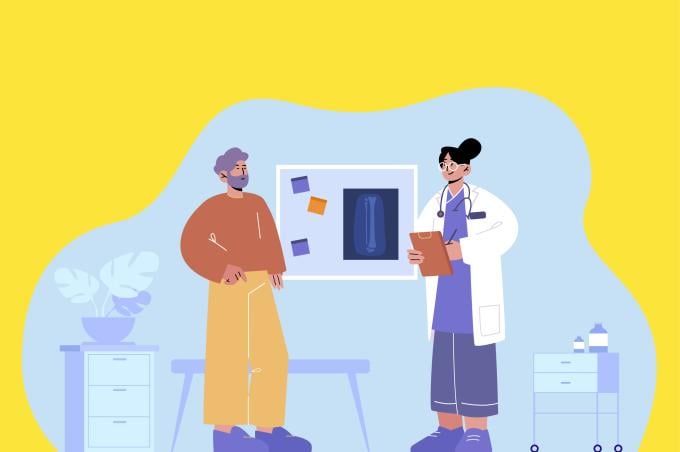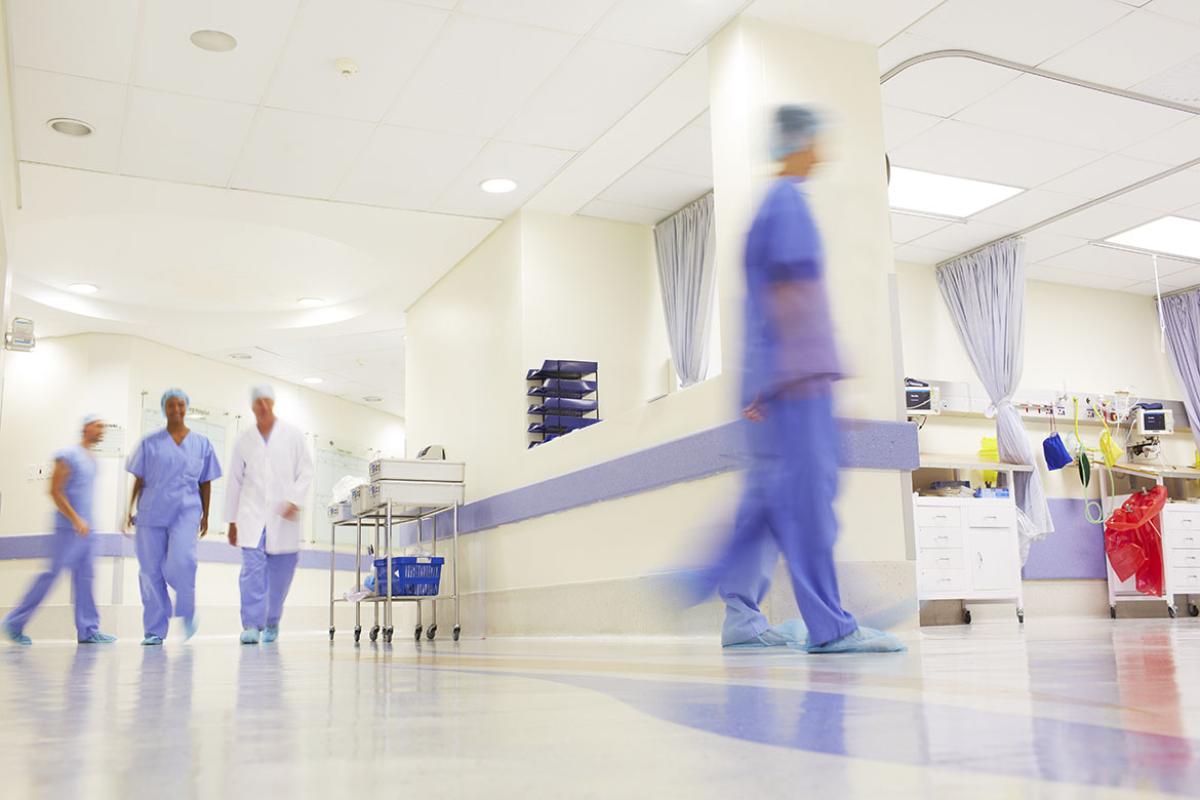The second year of residency training—postgraduate year 2 (PGY-2)—is a notoriously stressful time for physicians in training. Exclusive 2022 AMA survey data from more than 1,600 resident physicians across 17 organizations found that the burnout rate among second-year residents was a whopping 47%, owing largely to the radical change in responsibilities from PGY-1.
AMA member Lauren Crowther, MD, is a senior internal medicine resident at the University of California, San Diego, School of Medicine (UCSD). She experienced plenty of stress as she took on the responsibilities of a senior resident, but she also quickly found that the second year of residency was a welcome change from the first.
“As a first-year resident, you’re just learning how a hospital runs, how to write a good note, how to put in orders for medicines and how to call in consults on other services. But by the time you get to your second year, you have a lot of that down and you can focus on the big picture,” Dr. Crowther said.
In an interview with the AMA, Dr. Crowther put forward a number of things she wants interns to know as they head into PGY-2. Foremost among them: It’s an opportunity to reconnect with yourself and what drew you to medicine.
No one expects you to be an expert
“The biggest thing I always want to tell everybody entering PGY-2 is you don't need to know everything—you’re still in training,” she said. “You're safe. There are attendings who want to help you. You can lean on them.”
At the UCSD internal medicine residency program, each intern is responsible for about eight patients, and each second- or third-year senior resident oversees two interns. That amounts to 16 patients per senior resident, a number that seemed daunting to Dr. Crowther when she started her second year of residency.
“I was thinking: Oh my gosh, I'm going to have to know what to do with every single patient's problems,” she said. “I was having a lot of imposter syndrome. I remembered my senior residents and how much they knew, and I thought: How am I going to amount to that? But it's a very natural thing to have that feeling looming in the back of your mind.”
Instead of demonstrating an encyclopedic knowledge of medical conditions and treatments, every PGY-2 should prioritize knowing where to look for guidance, she noted.
“It’s not about knowing immediately on your own how to manage any particular condition,” she said. “You want to know who and when to ask for help and to start building your own confidence as a physician.”
You get to think more broadly
“Your first year is all about getting the muscle memory down. It’s all about repetition,” she said.
PGY-2 requires a higher level of thinking.
“I don't think you necessarily need to get into the nitty gritty with each patient,” she said. “It's more big picture. You get to ask: What is this patient here for? What are we working them up for? How are we going to get them out of the hospital? Plus, you get a lot more face time with your attendings than you did as an intern.”
You might work more, but it might be more fun
“I’ve probably worked more hours as a senior resident than I did as a first-year just because I’ve tried to make sure everything is tied up at the end of the day—that all the orders are in, that all the notes are done, that all the plans are solidified after checking on what your consultants recommended,” Dr. Crowther said.
But working long hours isn’t necessarily a bad thing.
“The days have felt longer—and they probably have been longer—because I was trying to package things up and get my interns out, because I know how hard they’re working,” she noted. “Lessening the burden for your colleagues is rewarding.”
It’s an opportunity to start anew
“You definitely develop bad habits in PGY-1, because you're so busy taking care of your patients that you forget to also take care of yourself,” Dr. Crowther said, noting that most physicians went into medicine to take care of others, yet a lot of times the work comes at the expense of their own health.
“You’re working six days a week, 12 to 14 hours a day, and often when you’re hungry you just hit the cafeteria for chicken tenders and French fries,” she said. “Everyone’s gaining weight in that first year, and very few are able to exercise or do anything else that used to bring them joy.”
Correcting these bad habits is one of the big opportunities that the second year of residency presents.
“It’s a time for reflection, for sure,” she said. “I know people like to journal, and people can do whatever makes sense to them, but the most important thing is to get reacquainted with what about medicine brought you joy and then figure out how you can tap into it again.”
Give everyone the attention they need
PGY-2s are accountable for their entire team’s patient list, but also for the development and support of their interns, Dr. Crowther noted.
“It's challenging to have to delegate and not do anyone else’s work unnecessarily,” she said. “You want to help your interns get out on time so they can sleep, because you remember how hard it is being an intern. But you also try to figure out how to help them become the best doctor they can be in this stage of their training.”
This means customizing your efforts with each intern.
“They're all coming from different medical schools and they all have a different levels of confidence,” she said. “So one of your challenges is to figure out how to bring out confidence in folks who are less confident—and also manage the ones who are overconfident.”
Don’t be afraid to ask for help
Fortunately, the UCSD internal medicine residency program has many resources in place for residents experiencing stress.
“What's nice about our program leadership is that they constantly remind us that there are mental health resources available if we need them,” Dr. Crowther said.
In addition, second year is a great time to reestablish care with your primary care doctor, she noted. After all, every doctor is a patient too.
“Other than that, your co-residents are always a resource,” she said. “In a lot of ways, they’re your family. You've trauma bonded, you’ve gone through the thick of it together, and you’ve learned to lean on each other for answers and support.”
There is light at the end of the tunnel
By the end of their intern year, many residents get tired of being the person who is responsible for all the ground-level tasks, Dr. Crowther noted.
“Interns always ask: Is second year actually better?” she said, adding that the second and third years can be dramatically different from the first.
“Yes, the responsibility’s greater, but the mental burden of things like electrolyte repletion and starting a good bowel regimen is less,” she said. “As an intern, you're looking at each individual problem the patient has and sometimes find yourself getting into the weeds, but as a senior, you get to think more about the whole person. So I always tell them: Yes, it does get better.”
Learn more about the AMA Resident and Fellow Section, which gives voice to—and advocates on—issues that affect resident and fellow physicians.





